
Podcast Episode 36 – The Dove From Above
PODCAST EPISODE 36: The Dove From Above Join us on a beautiful June evening for episode 36 of the Knepp Wildland Podcast. We’re joined by
Home / The pioneering women in science who inspired Knepp’s female scientists
Knepp’s story of nature restoration is underpinned by science. Among our team are numerous pioneering scientists, and for International Day of Women and Girls in Science, we asked some of them who had inspired them and why. Here’s what they said.
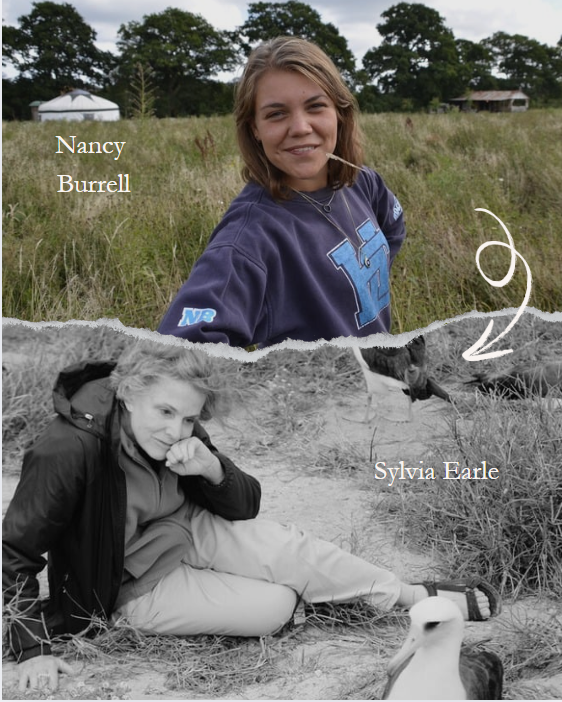
Dr Nancy Burrell, marine biologist
Nancy completed her biology PhD at the University of Oxford. Her research focuses on the carbon storage potential of rewilding, using Knepp as a case study. She is currently developing a model to calculate the carbon stored in scrub generated by rewilding, considering the effects of animal browsing both above and below ground.
“The female scientist who has most inspired me is Sylvia Earle. Even though my current project is land-based, I still identify as a marine biologist, and Earle’s work embodies the kind of scientist I strive to be. She has not only advanced our understanding of the ocean but has also taken an active role in conservation, proving that science should lead to action, not just knowledge.
“Too often, research remains confined to academia, but Earle has shown that scientists have a responsibility to protect the ecosystems they study. As a woman in science, in a male-dominated field, she has broken barriers and reshaped our thinking, demonstrating that determination and advocacy are just as important as data. Her unwavering commitment to marine conservation continues to inspire me to use science as a tool for change.”
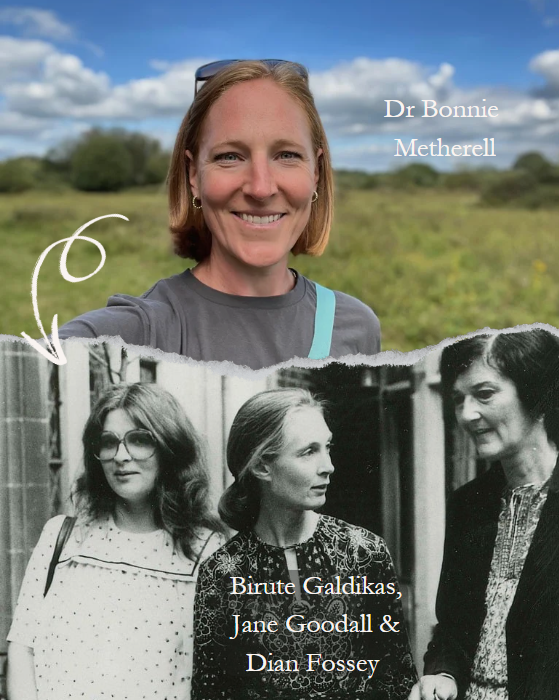
Dr Bonnie Metherell, behavioural ecologist
Bonnie is the Partnerships Lead for the Knepp Wildland Foundation. She is responsible for developing and delivering a partnership and fundraising strategy to help grow the foundation.
“The female scientist who has most inspired me is…well, there are three of them: Jane Goodall, Dian Fossey and Birute Galdikas, who pioneered the study of primates in their natural environment.
“Reading their books as a teenager inspired me to explore the world and carry out my own research which, in a roundabout way, led me to this magical patch of Sussex where I’m now supporting Knepp’s pioneering work. These women inspired me to be bold and adventurous in life – qualities I try to instil in my young daughters every day who, pleasingly, already love science.”
Rina Quinlan, palaeoecologist
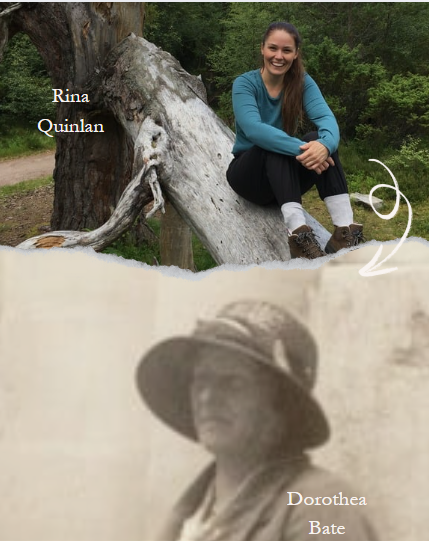
Rina is a safari guide at Knepp, specialising in large herbivores in rewilding and the study of past ecosystems. She helps to manage Knepp’s Exmoor pony herds. Rina is a PhD researcher looking at the palaeoecology of elk and bison, to explore the feasibility of their return to Britain.
“The female scientist who has most inspired me is Dorothea Bate. In 1898, she became one of the first women to be employed by the Natural History Museum and was among the first to publish her findings at a time when research and scientific exploration were overwhelmingly male dominated fields. She carried out groundbreaking research in palaeontology, and travelled extensively, often alone, to remote caves and islands, unearthing fossils that reshaped our understanding of extinct ecosystems.
“Her discoveries of species such as dwarf elephants and pygmy hippos on islands helped to connect the intertwined disciplines of evolution and past environmental change. She lived a life of exploration and adventure, yet dedicated herself to making new discoveries that helped us reconstruct past landscapes and better understand what we have lost. I hope she would be pleased to know that her research, and that of others after her, such as my PhD supervisor, palaeoecologist Professor Danielle Schreve, is now being used to guide the restoration of nature-rich ecosystems.”
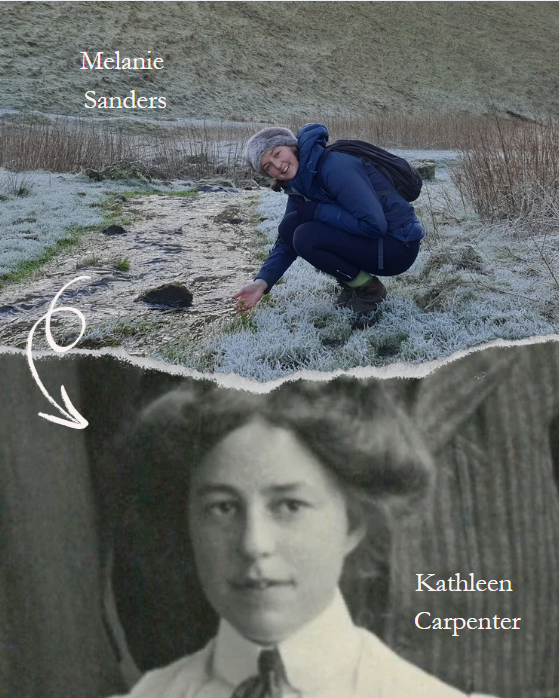
Melanie Sanders, ecologist
Melanie is the River Recovery Manager for the Knepp Wildland Foundation, and she is leading the delivery of the Adur River Recovery project. For this, she is working with 27 farms to create a revived and resilient river corridor.
“Kathleen Carpenter inspired me. She was a pioneering freshwater ecologist who, like me, began her studies into rivers at Aberystwyth University. She carried out groundbreaking research into the effects of industrial waste on freshwater ecosystems and went on to write Life in Inland Waters (1928), the first English textbook on freshwater ecology to ever be published. In it, she emphasises the vital role of freshwater in human society, highlighting its socioeconomic importance.
“Beyond her scientific achievements, she was remarkably skilled and determined. She spoke several languages, enabling her to collaborate internationally, and travelled solo across the Atlantic multiple times to present her research. She recognised the value of nature – not only as something to be protected but also to be appreciated and enjoyed. Her resilience, intellect and unwavering passion for freshwater science inspire me to continue protecting our freshwater systems. As she so beautifully described, they are “a world of infinite beauty, infinite variety, infinite charm”.
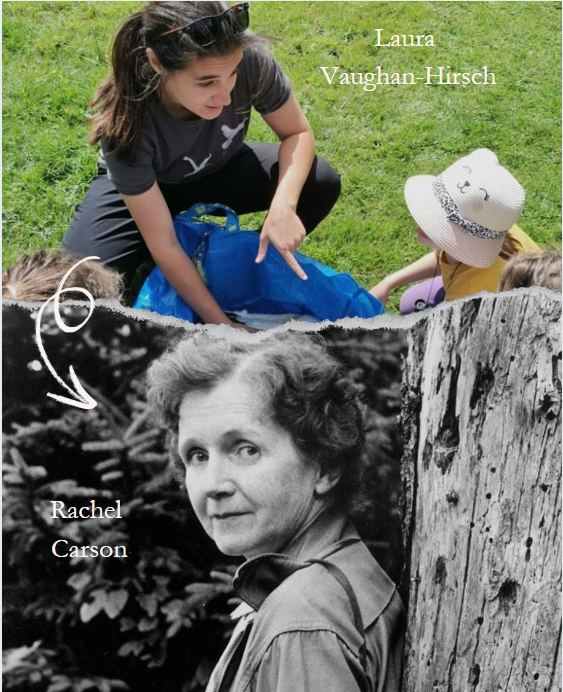
Laura Vaughan-Hirsch, biologist
Laura is the White Stork Project Manager. She coordinates the White Stork Project. As part of this she collaborates with project partners and volunteers, monitors and looks after Knepp’s breeding population of storks. She leads the engagement, outreach and research for the project.
“Rachel Carson is an inspirational scientist because she revolutionized the world’s understanding of environmental conservation. As a marine biologist and writer, she exposed the dangers of pesticides, particularly DDT, in her groundbreaking book Silent Spring. I remember the huge impact the book had on me when I read it for the first time as a young adult, and it sparking a desire in me to work in a sector that protects nature.
“Rachel Carson’s work led to increased public awareness, the banning of DDT in the U.S., and the creation of the Environmental Protection Agency (EPA). Carson’s courage in challenging powerful chemical industries, despite personal attacks, demonstrated her unwavering commitment to science and truth. Her legacy continues to inspire environmentalists, scientists, and activists, proving that one voice can ignite a movement for a healthier planet.”

PODCAST EPISODE 36: The Dove From Above Join us on a beautiful June evening for episode 36 of the Knepp Wildland Podcast. We’re joined by
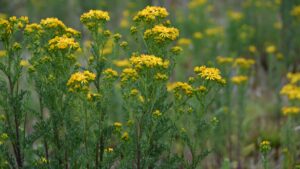
Matt Phelps | Lead Ecologist It’s mid-June and the countryside is quietly gearing up for its summer crescendo. You might have noticed it already— what
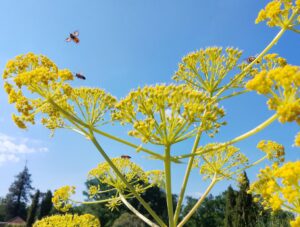
Moy Fierheller | Deputy Head Gardener Visit Knepp’s rewilded Walled Garden The fine, fairy-tale spring continues and the Met Office reports it’s the sunniest in
Knepp Wildland Safaris, our gardens and campsite are all about the quiet and patient observation of nature.
Some of the species we are likely to encounter are shy or can be frightened by loud noises or sudden movements. Our campsite with open-air fire-pits, wood-burning stoves and an on-site pond is unsuitable for small children.
For this reason, our safaris, garden visits, holiday cottages and campsite are suitable only for children of 12 and over.